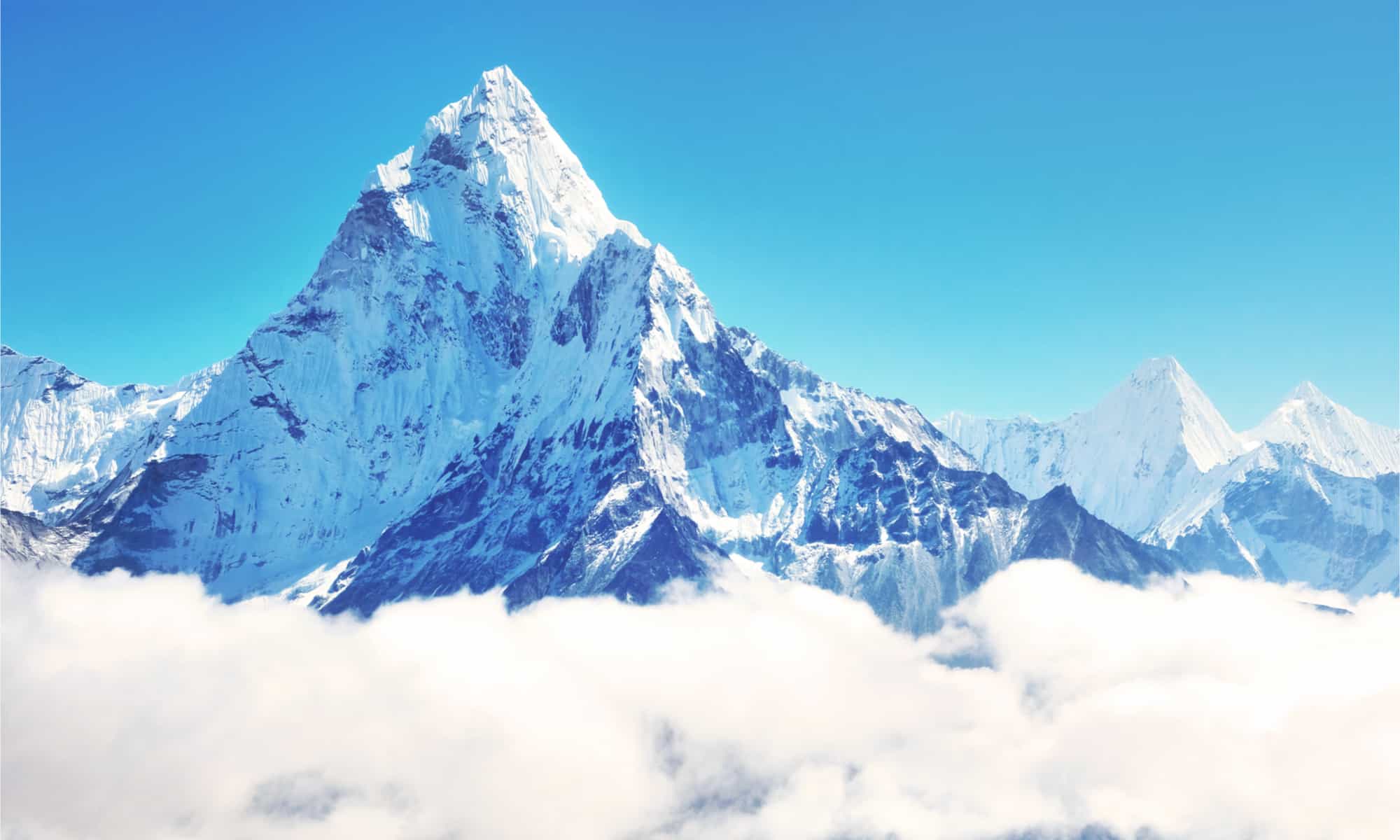Approximately 332 people have died while climbing Mount Everest since 1921, translating to around 4.4 fatalities every year. The most recent death on Mount Everest occurred on June 3, 2023. On the other hand, the first recorded death on the mountain happened on June 5, 1921.
While many deaths on Mount Everest are separate incidents, some occur simultaneously. For instance, an intense earthquake took the lives of 19 people near Everest on April 25, 2015. Additionally, an avalanche on April 14, 2014, claimed 16 lives.
Most people who die while climbing Mount Everest come from the country of Nepal, as the mountain lies on the border between Nepal and China. In addition, China ranks sixth on the list of countries with the greatest number of citizens who died on Mount Everest, with 12 fatalities, following the United States, which recorded 14 fatalities.
Unfortunately, the bodies of the people who pass away on Mount Everest are rarely recovered. Certain weather conditions and causes of death make it impossible for bodies to be found, let alone extracted from the dense snowpack. Avalanches also prevent emergency personnel from recovering bodies. Other causes of death on the mountain, such as falls, pose a similar problem for recovery. Overall, only around one-third of the bodies on Mount Everest have been recovered.
Discover the seven common causes of death on Mount Everest and how climbers can prevent them from occurring.
1. Acute Mountain Sickness

Altitude sickness is another name for acute mountain sickness.
©evan_huang/Shutterstock.com
Acute mountain sickness, also known as altitude sickness, is common among adventurers who climb mountains that are high in elevation. Due to low oxygen levels at high elevations, climbers can begin to feel dizzy, fatigued, or nauseous. These side effects, amongst many others, are common symptoms of acute mountain sickness. While it can be prevented and treated, it may turn fatal. In fact, acute mountain sickness is one of the leading causes of death on Mount Everest.
2. Falls
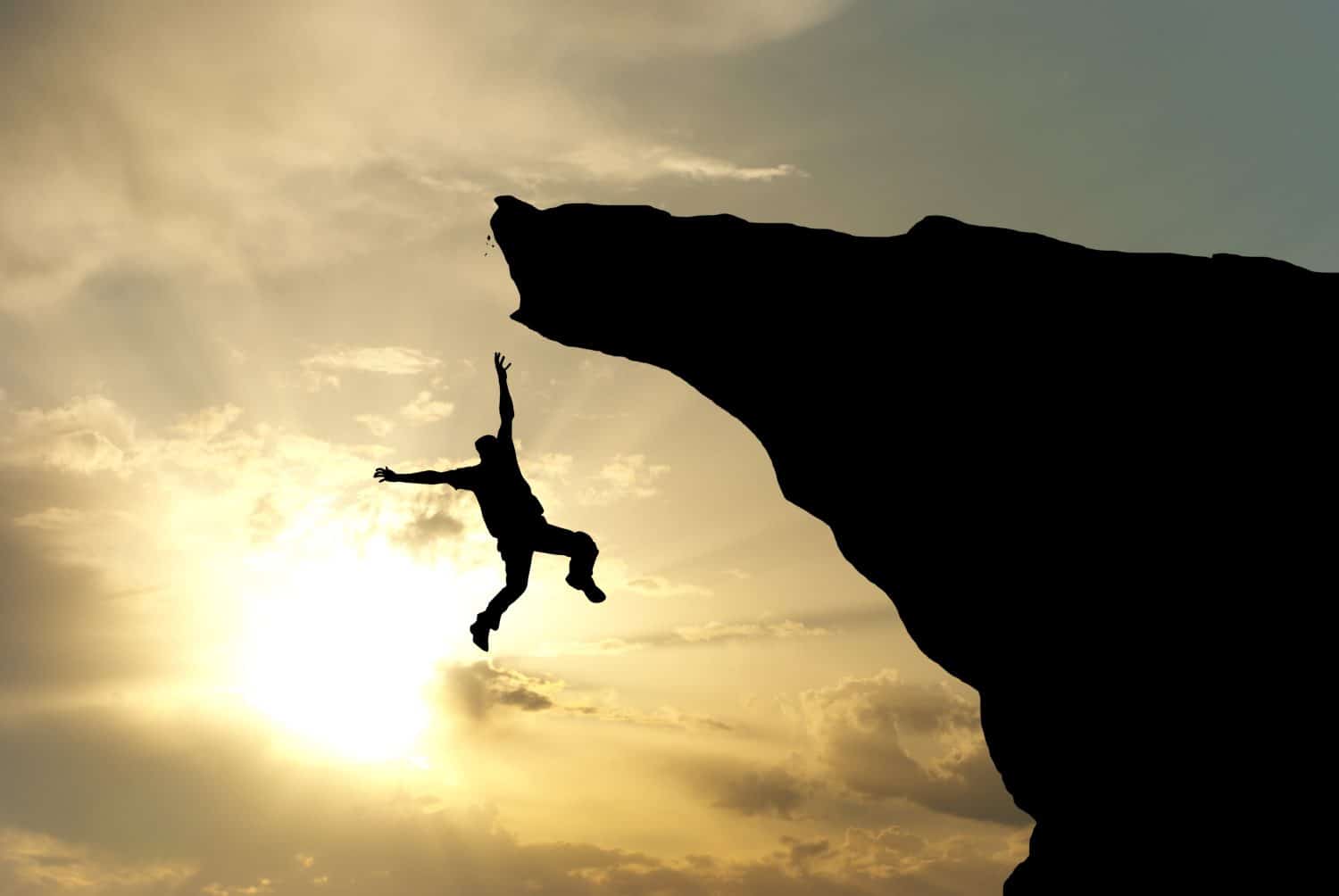
Recovering fallen bodies on Mount Everest proves extremely challenging.
©djgis/Shutterstock.com
Falls also rank as one of the most common causes of death on Mount Everest. While climbing, people may experience fatigue or loss of balance that causes them to fall. These falls can be fatal, especially if the climber falls from a significant height.
3. Avalanches
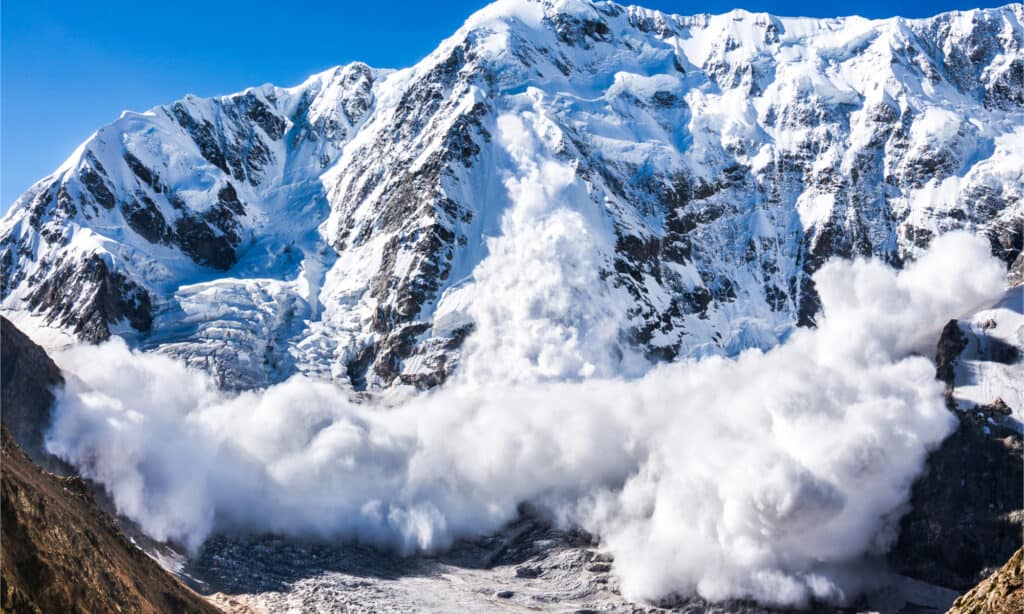
Avalanches can cover entire camps on Mount Everest in a dense snowpack.
©Lysogor Roman/Shutterstock.com
Unlike other common causes of death on Mount Everest, avalanches often claim many lives all at once. An avalanche occurs when a large mass of snow, rocks, and ice falls rapidly down the side of a mountain. Avalanches pick up more snow and ice as they descend, making this natural phenomenon particularly disastrous for climbers, camps, and communities on Mount Everest.
4. Hypothermia

Hypothermia happens when the body releases more heat than it absorbs.
©Jelena Stanojkovic/Shutterstock.com
In cold conditions, such as those on Mount Everest, hypothermia is not a rarity. Hypothermia occurs when the body cannot absorb or create more heat than it releases. Therefore, the body’s temperature drops rapidly, which can inhibit some bodily functions. If hypothermia continues for a prolonged period, the affected body can stop working properly. Fatality is a possible outcome of hypothermia, especially on Mount Everest.
5. Exposure

Exposure can result in fatal injuries for climbers.
©Image Source Trading Ltd/Shutterstock.com
Exposure, a term commonly used in hiking, skiing, and climbing, describes a portion of a trail or route that is extremely steep. Nothing lies below the climber to act as a safety net if they were to fall. One small misstep could result in serious injury, which could eventually turn fatal. When combined with acute mountain sickness, frostbite, or injury, maneuvering across exposed terrain can be even more deadly.
6. Exhaustion

Exhaustion ranks as one of the leading causes of death on Mount Everest.
©Soloviova Liudmyla/Shutterstock.com
Exhaustion is one of the leading causes of death on Mount Everest, alongside acute mountain sickness. Lack of oxygen flow to the brain can result in extreme fatigue. Additionally, the physical strain of climbing Mount Everest encourages exhaustion, too. When climbers become exhausted, they’re more susceptible to falls and injuries, and these complications often result in fatality.
7. Crevasses
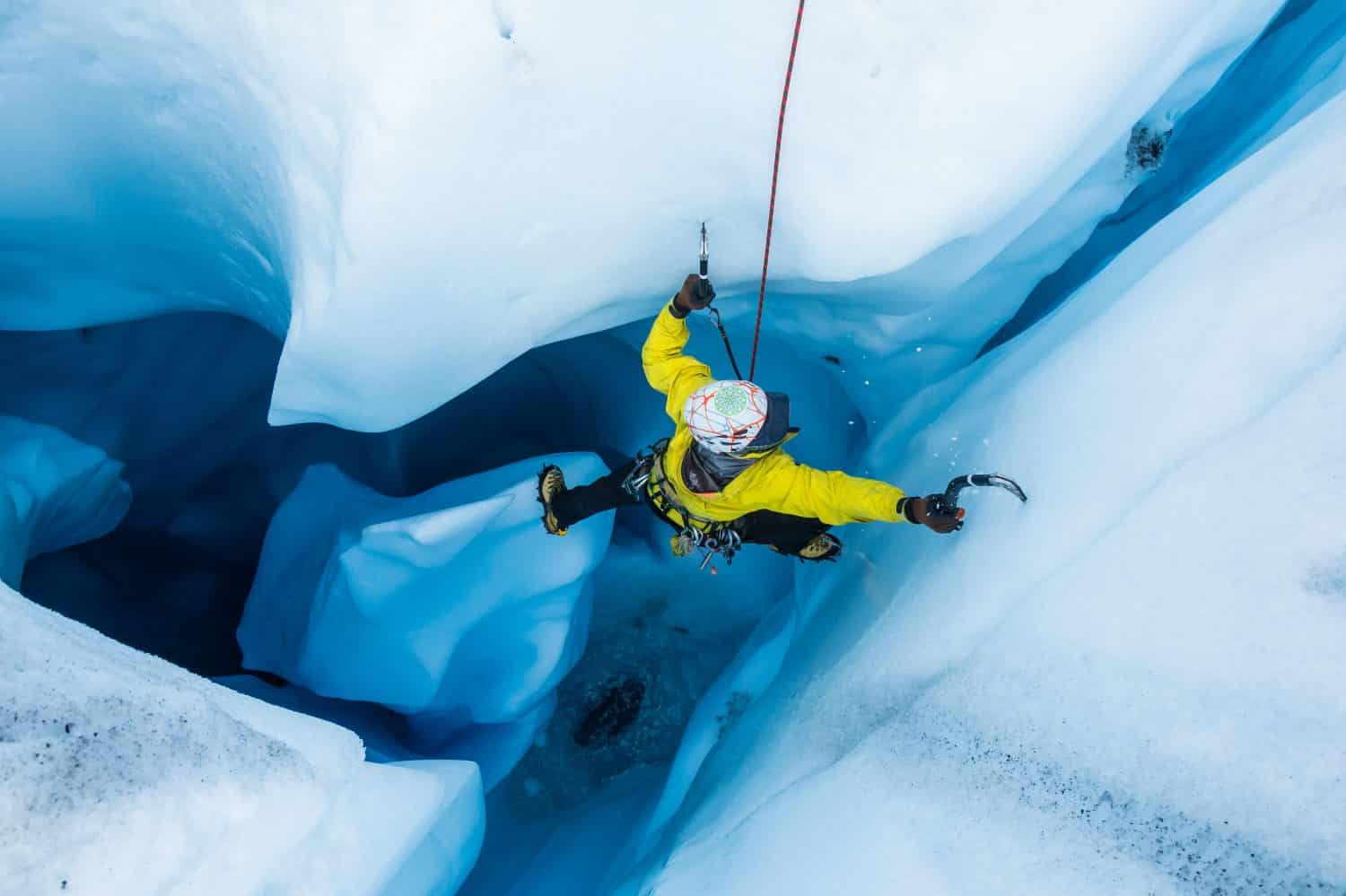
Falling into a crevasse may result in injury or hypothermia, which can result in fatality.
©DCrane/Shutterstock.com
The term “crevasse” typically refers to a large opening or chasm. On Mount Everest, crevasses form within glaciers and are extremely dangerous. If climbers fall within a crevasse, they are likely to become trapped with little hope of recovery. Because temperatures are typically lower within a crevasse, climbers who fall into one are likely to experience hypothermia and have little chance of survival.
What is the Death Zone on Mount Everest?
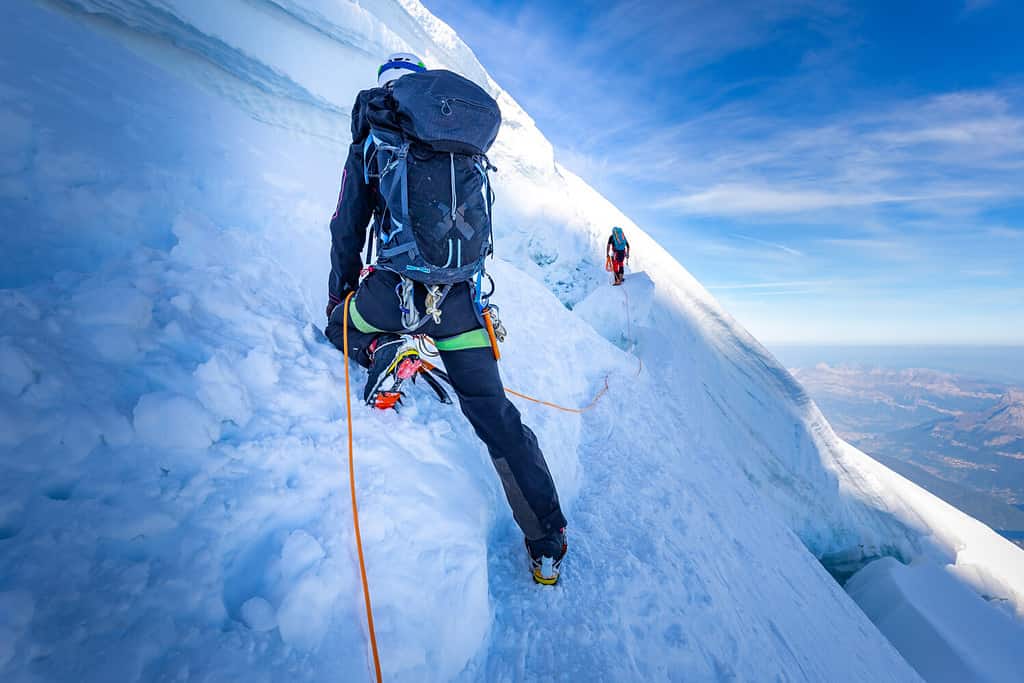
Climbers on Mount Everest must be wary of the life-threatening death zone above 8,000 meters.
©Evgeny Subbotsky/Shutterstock.com
The death zone is a portion of Mount Everest that lies beyond 8,000 meters (26,247 feet) in elevation. At the death zone, available oxygen is extremely low, making respiration difficult for climbers. Additionally, the elevation of the death zone leaves climbers highly exposed, causing them to be at risk of frostbite or snow blindness. Climbers that enter the death zone should stay there no longer than 16 to 20 hours, as serious and potentially fatal side effects may occur.
Thank you for reading! Have some feedback for us? Contact the AZ Animals editorial team.

